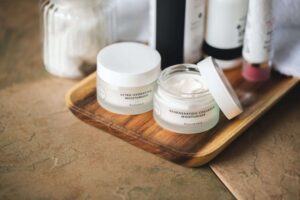The Truth About Beauty Sleep

In the hustle and bustle of our daily lives, it’s easy to overlook one of the most powerful tools in our beauty arsenal: a good night’s sleep. Beyond its well-known benefits for overall health and well-being, quality sleep plays a crucial role in repairing and rejuvenating our skin. In this blog post, we’ll delve into the science behind beauty sleep and share essential tips to maximize your overnight skincare routine.
The Science Behind Beauty Sleep
Sleep is often referred to as the body’s natural healer, and its impact on skin health is no exception. During the night, our bodies enter a state of deep rest, allowing various physiological processes to kick into high gear. One of the key players in this nightly repair process is growth hormone production.
Growth hormone, primarily released during deep sleep, stimulates cell turnover and regeneration. As a result, damaged skin cells are replaced with new, healthy ones. Collagen production also peaks during the night, contributing to skin elasticity and firmness. Lack of quality sleep can disrupt these processes, leading to visible signs of aging, such as fine lines, wrinkles, and sagging skin.

Tips for Maximizing Overnight Skin Repair
- Establish a Consistent Sleep Schedule: Maintaining a regular sleep routine helps regulate your body’s internal clock, promoting more restorative sleep. Aim for 7-9 hours of quality sleep each night to allow your skin ample time for repair.
- Cleanse Thoroughly Before Bed: Removing makeup, pollutants, and excess oils is crucial before hitting the pillow. Use a gentle cleanser suitable for your skin type to ensure a clean canvas for your nightly skincare routine.
- Hydrate Your Skin: Apply a hydrating and nourishing moisturizer before bedtime to lock in moisture. Dry skin is more prone to fine lines, so keeping your skin well-hydrated is essential for a youthful complexion.
- Incorporate Retinol: Consider adding a retinol-based product to your evening routine. Retinol, a derivative of vitamin A, promotes collagen production and accelerates cell turnover, helping to reduce the appearance of wrinkles and fine lines.
- Invest in a Quality Pillowcase: Swap your regular pillowcase for a silk or satin one. These materials cause less friction on the skin, reducing the likelihood of sleep lines and preventing hair breakage.
- Elevate Your Head: If you struggle with puffiness or under-eye bags, try sleeping with your head slightly elevated. This position helps minimize fluid retention in the face, resulting in a more refreshed appearance in the morning.
- Use an Overnight Mask: Treat your skin to an overnight mask or hydrating treatment at least once a week. These products are formulated to deeply nourish and repair the skin while you sleep, leaving you with a radiant complexion upon waking.
- Limit Stimulants Before Bed: Cut back on caffeine and avoid heavy meals close to bedtime. Stimulants can interfere with the quality of your sleep, hindering the skin’s natural repair processes.
- Create a Relaxing Bedtime Ritual: Establishing a calming pre-sleep routine signals to your body that it’s time to wind down. This can include activities such as reading a book, practicing gentle yoga, or enjoying a warm, caffeine-free beverage.
- Stay Hydrated: Drinking an adequate amount of water throughout the day helps maintain skin hydration. Dehydrated skin is more prone to irritation and can impede the skin’s natural repair mechanisms.
As we navigate the demands of our daily lives, it’s crucial to recognize the profound impact that quality sleep has on our skin. By adopting these tips for maximizing overnight skin repair, you can harness the power of beauty sleep to achieve a healthier, more radiant complexion. Remember, investing in your sleep is an investment in your skin’s long-term health and beauty. Sweet dreams!




